CS 208 w20 lecture 16 outline
1 Program's View of Memory

2 CPU-Memory Bottleneck
- processor speed has increased at a much faster rate than memory speed, creating an increasing bottleneck
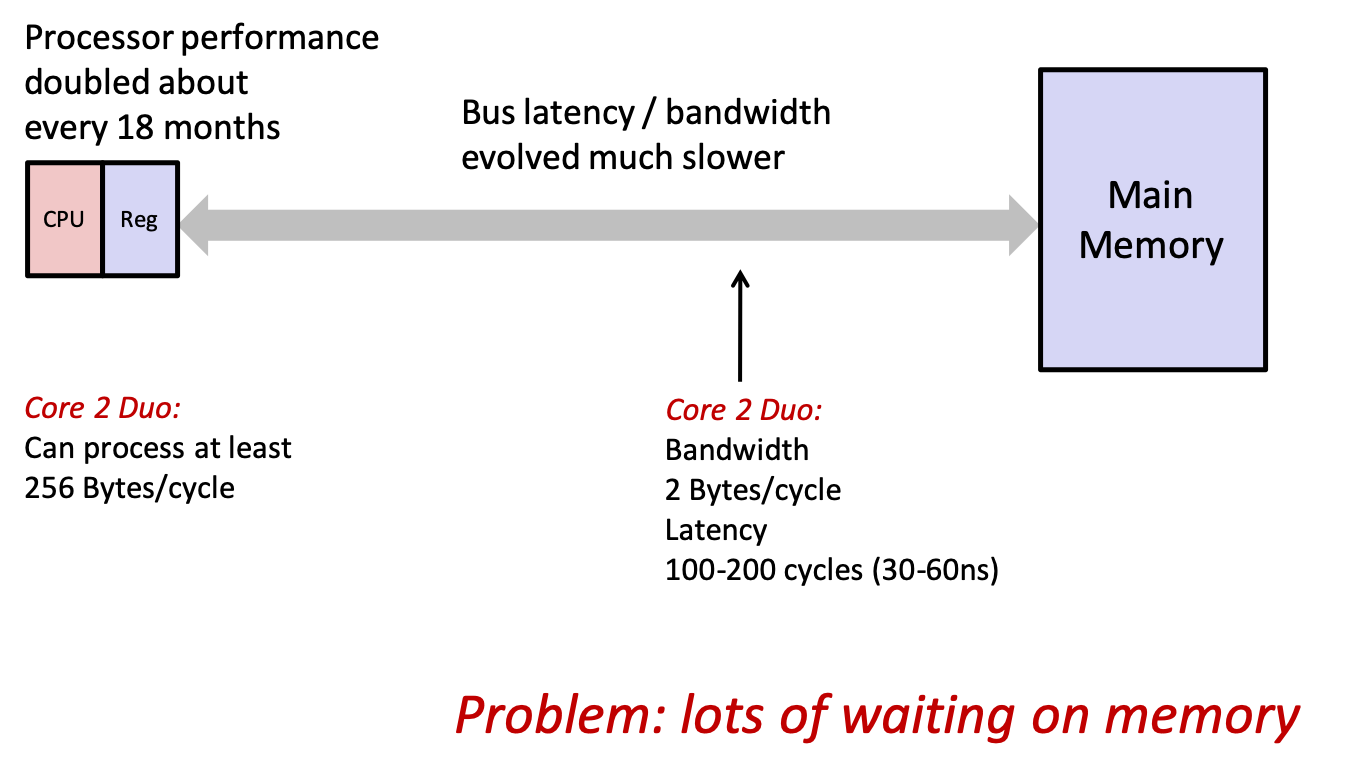
3 Caches!
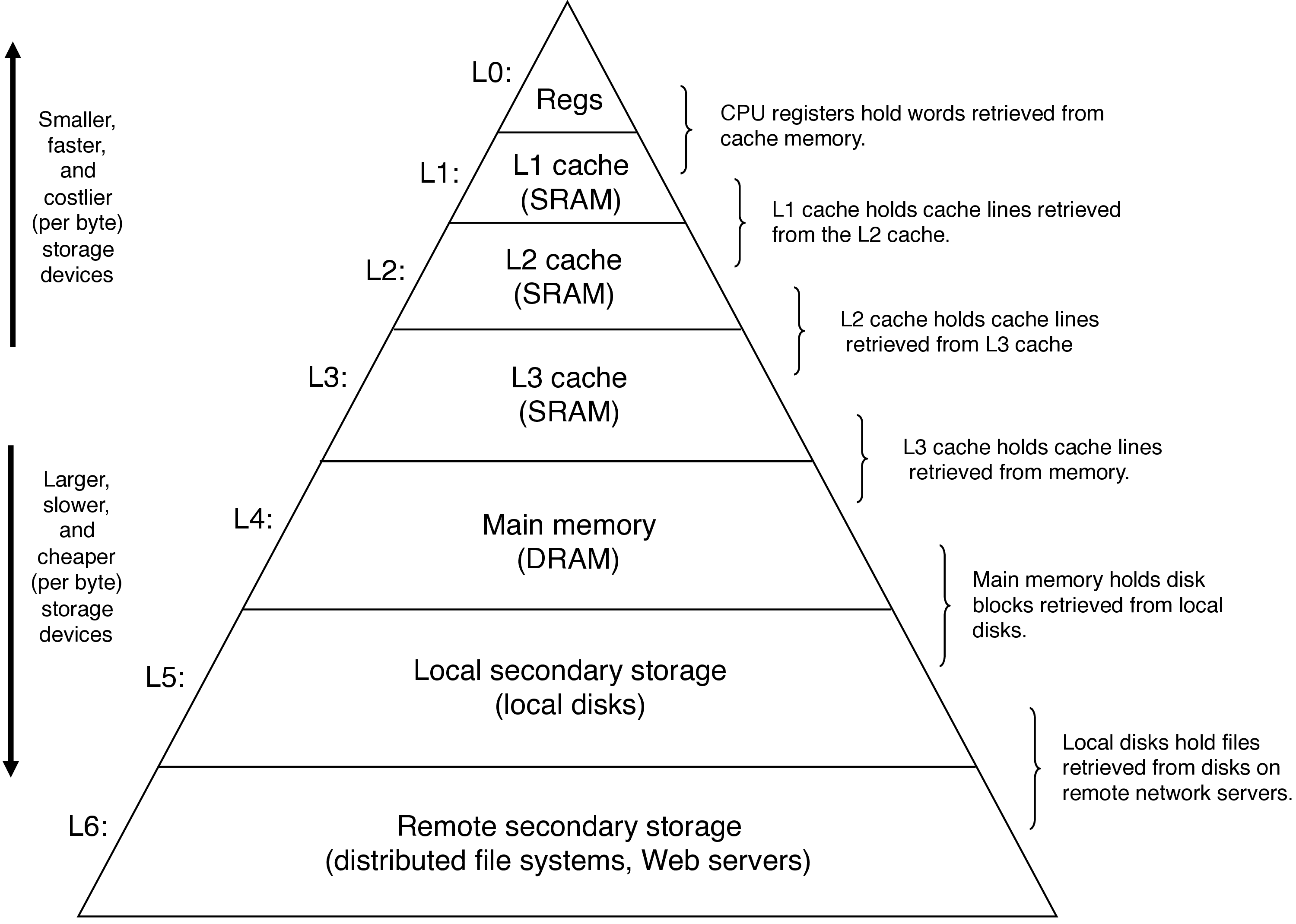
- 0 cycles to access a register (16×8 bytes)
- 4–75 cycles to access a cache (~10 MB)
- 100s to access main memory (GBs)
- 10s of millions to access disk (TBs)
3.1 Aside: SRAM vs DRAM
3.1.1 Static RAM (SRAM)
- bistable memory cell, 6 transitors per bit
- stable in two states, any other state quickly moves into a stable one
- resiliant to disturbance
3.1.2 Dynamic RAM (DRAM)
- single transitor and capacitor per cell, can be very dense
- sensitive to disturbance
- drains on a timescale of 10 to 100 ms, must be refreshed (read and re-written)
- error-correcting codes (extra bits associated with each word) can also be used
3.2 Basic Idea
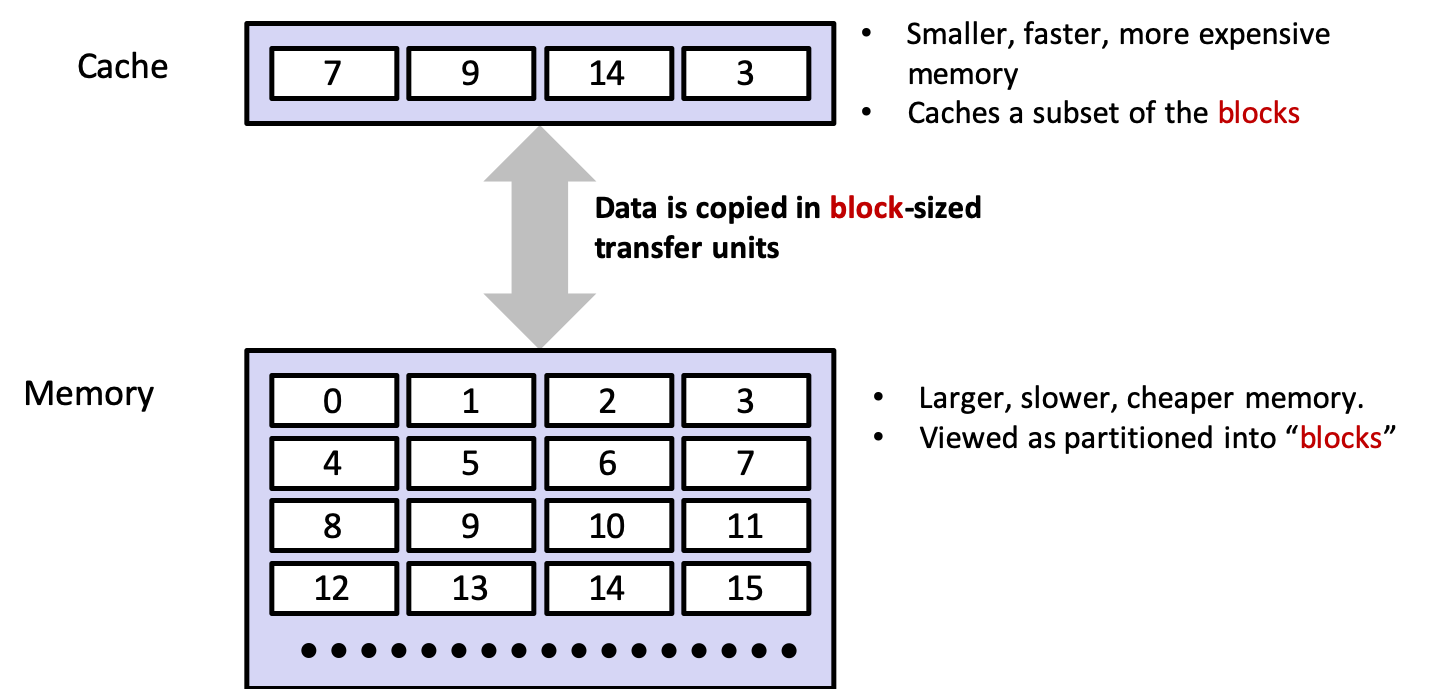
3.2.1 Cache Hit
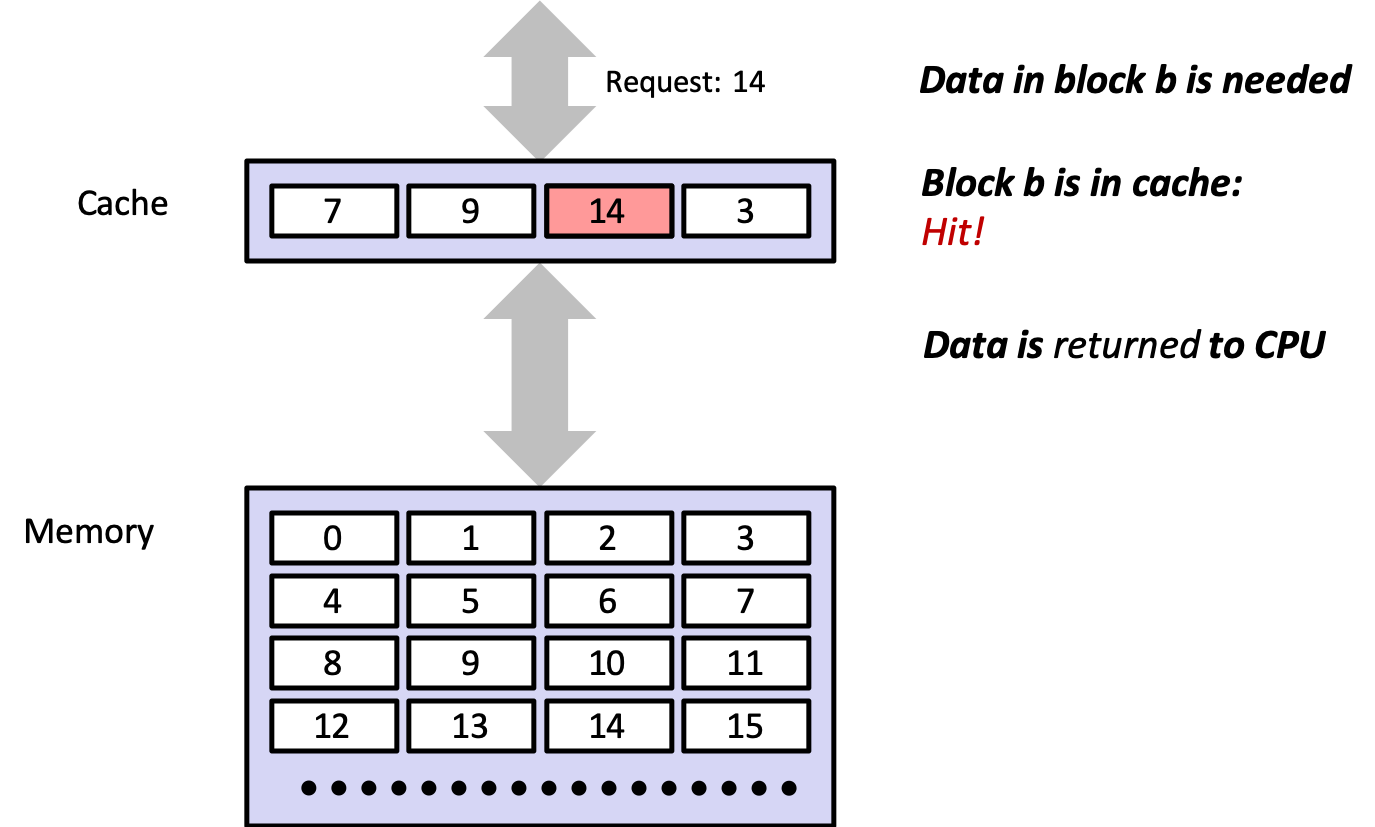
3.2.2 Cache Miss
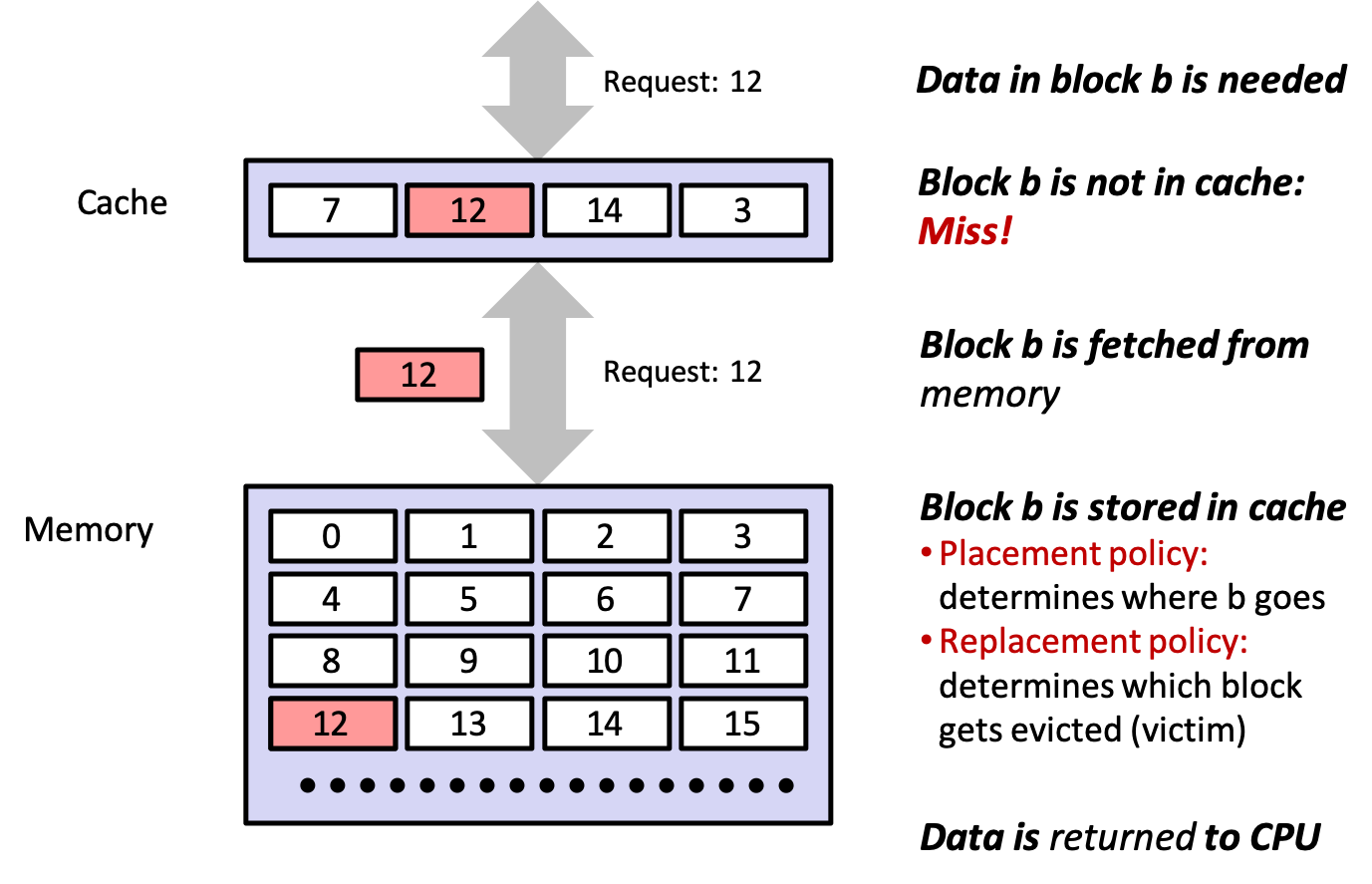
4 Locality
- essentially: referencing data that was recently referenced or that is nearby recently referenced data
- temporal locality: a referenced memory location is likely to be referenced again in the near future
- spatial locality: if a memory location is referenced, nearby locations are likely to be referenced in the near future
- in general, programs with good locality run faster, as all levels of the system are designed to exploit locality
- hardware cache memories, OS caching recently referenced chunks of virtual address space and disk blocks, web browsers caching recent documents